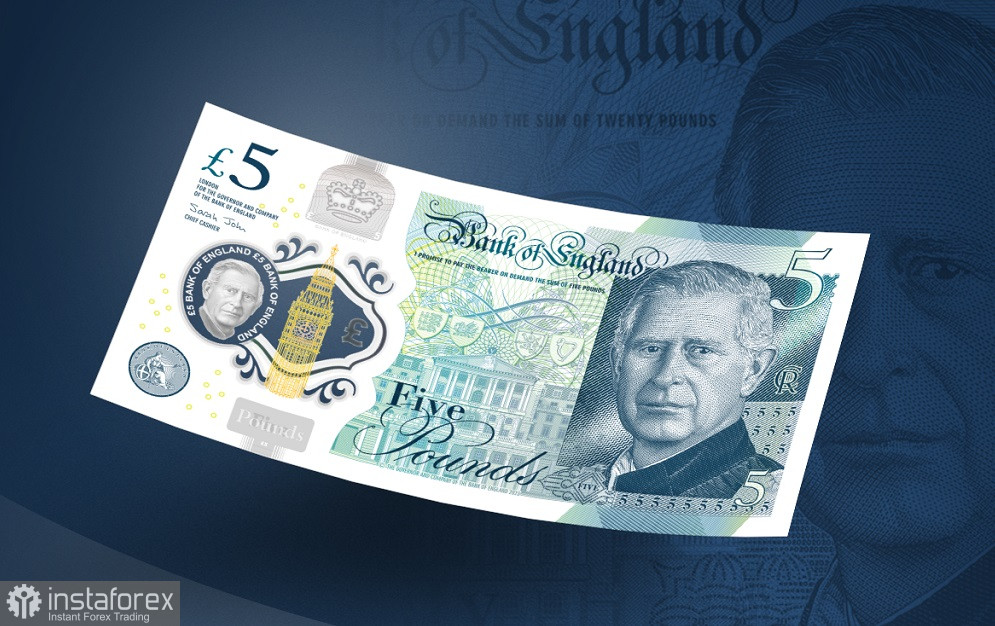The GBP/USD pair is plummeting, reacting to the results of the U.S. presidential election. Wednesday's downward momentum is driven entirely by the strengthening U.S. dollar. The dollar index attempts to secure itself at four-month highs, within the 105 range. Major currency pairs are experiencing heightened volatility, breaking through all price barriers in their path. GBP/USD is no exception: bears impulsively broke through the 1.2870 support level (the lower line of the Bollinger Bands indicator on the D1 time frame) and are now attempting to consolidate below this target.

However, the pound was already under significant pressure before the U.S. election, following the ruling Labour Party's presentation of its first budget since winning the parliamentary elections in July. Large expenditures, substantial borrowing, and other fiscal proposals were met with disapproval from the British currency. At first glance, this reaction might seem anomalous, but concerns over a heavier tax burden have raised doubts about economic growth prospects.
Reacting to the budget announcement, the GBP/USD pair fell to 1.2843 last week. The situation reminded many market participants of Liz Truss's brief tenure as Prime Minister when her "mini-budget" shocked markets and ultimately became her political downfall. While the nature of the budget proposals differs (Truss's budget aimed for the most significant tax cuts in modern U.K. history), the market reaction was similar—then, the pound fell, and it's falling now.
The Bank of England could exacerbate the pound's troubles if it announces further monetary policy easing.
The formal outcome of the November meeting, set to be announced on Thursday, November 7, is already anticipated—markets are 100% confident that the central bank will cut the interest rate by 25 basis points. However, the outlook for future actions remains uncertain.
It's worth noting that the overall consumer price index (CPI) has fallen to 1.7% on an annual basis against a forecast of 1.9%. This marks the slowest growth rate since April 2021, bringing inflation back within the BoE's target range. However, the core CPI, while declining, remains above the 3% threshold, dropping to 3.2%—the lowest since September 2021.
The retail price index (RPI), which employers often use in wage negotiations, also entered the red zone. Annually, it slowed to 2.7%, compared to expectations of 3.1%, marking the weakest growth since March 2021. CPI inflation in the services sector fell to 4.9% year-on-year in September, dropping below the key 5.0% level for the first time in months. Wage growth also slowed, with average earnings (including bonuses) falling to 3.8%—the lowest since January 2021. Excluding bonuses, the figure dropped to 4.9%, the slowest growth rate since August 2022.
These results enable the BoE to lower interest rates at the November meeting. Moreover, they may prompt the central bank to announce another rate cut at its final meeting of the year. However, some experts, including Scotiabank economists, doubt the Bank will cut rates at two consecutive meetings. They argue their case by pointing to core inflation (still above 3%), inflation in the services sector, and the declared discretionary fiscal easing.
Skepticism about signaling further dovish measures (such as announcing a December or early 2025 rate cut) could harm the British pound. The pound could be under significant pressure if the BoE's rhetoric is dovish. Such an "extremely dovish" scenario is not currently priced in, meaning its realization could catch the market off guard.
On Wednesday, the GBP/USD pair moved on emotions following the Republican Party's triumphant victory, securing the White House and both chambers of Congress—the Senate and the House of Representatives. However, on Thursday, the pair may face additional pressure from the Federal Reserve (if it emphasizes the acceleration of U.S. core inflation) and the BoE (if it hints at another rate cut by year-end). In my view, the BoE will not only lower rates but also articulate a dovish stance, enabling GBP/USD sellers to push the pair down to the 1.2800 support level, with the potential for testing the base of the 1.2800 range.





















